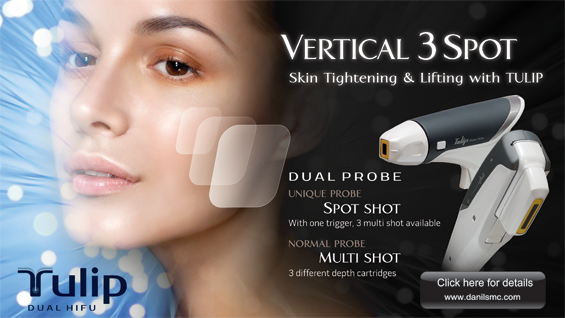
Nam Sunghan
Director, Viz Plastic Surgery, Seoul Korea
e-mail: claraclinic@hanmail.net
Injection technique
The clinical procedure of arm slimming with botulinum toxin is very simple. Inject about 20-30U on the lateral triceps in 1-2cm intervals. The total dose should be around 30-50U. Try to create a smooth overall outline rather than narrow the diameter of the arm. Adjust the dosage in each patient as using 50U in a patient with weaker arm strength can cause discomfort. In many cases, injecting over 50U does not cause any discomfort.
Xeomin, which is touted to contain pure botulinum toxin, can be expected to have low immune response due to absence of toxin proteins. However, some clinical reports have suggested only neutralizing antibodies. If the efficacy is the same, lower exposure to proteins would be more beneficial. Xeomin can be stored at room temperature before opening. As botulinum toxin is a foreign substance, it could always trigger immune response. Presence of neutralizing antibodies means that the drug loses its efficacy. In cervical dystonia, hundreds of units of botulinum toxin are repeated injected every few month with antibody rate of 5~10%. In aesthetic medicine, cases of contraindication to botulinum toxin due to antibody have been reported.
In the field of aesthetic medicine, two cases of treatment failure with botulinum toxin due to resistant antibodies were reported Dermatologic Surgery(A 20-year-old female patient was injected with 30U of diluted botulinum toxin on both sides of the jaw in 2007). Treatment interval was 4-5 months and treatment was repeated with the same product and at same dosage of 60U without any additional treatment.
From the fourth treatment, the drug took longer to take effect. After the fifth treatment, the angular shapes of the jaw returned in only 45 days and the sixth treatment failed to bring any muscle paralysis or contraction(SK Lee, Dermatol Surg 2007;33:S105–S110). Moreover, a study involving 303 patients with torticollis who were given at least 6 treatments of Dysport for at least 3 years found that resistance developed in 2%(low doses used in aesthetic procedures have 0.2% resistance)(Kessler et al, J Neuro 1999 ; 246 : 265-274).
Future of botulinum toxin
Currently, manufacturers of botulinum toxin are lowering the protein content to reduce the development of antibodies. Among the proteins of botulinum toxin are non-activated toxin proteins. The protein content of recent botulinum toxin products has dropped to 1/5, which resulted in lower immune response compared to older products. Similar results are continuing among competitors. In theory, antibodies can form with both toxin and non-toxin proteins of botulinum toxin.
I have the following advice for reducing the risk of neutralizing antibodies. First, maintain an interval of at least 3 months between treatments. Second, use the minimal efficacious dose. Third, use minimal doses for additional injection in only necessary areas.
I will wrap up my talk here. Thank you for listening.
References
1. Panjwani N, O Keeffe-R, Pickett A. Biochemical, functional and potency characteristics of type a botulinum toxin in clinical use. Botulinum Journal 2008; 1(1): 153-166 ** Aoki KR. Preclinical update on Botox(botulinum toxin type A)-purified neurotoxin complex relative to other botulinum toxin preparations. Eur J Neurol 1999; 6(4)
2. Panjwani N, Pickett A and O'Keeffe R. Botulinum type A toxins in clinical use: a comparison of specific potency and protein content, 5th International Conference on Basic and Therapeutic Aspects of Botulinum and Tetanus Toxins, 23-25 June, Denver, USA )
[Advertisement] Tulip(Skin Tightening & Lifting) – Manufacturer: DANIL SMC(www.danilsmc.com)
-To be continued-




















